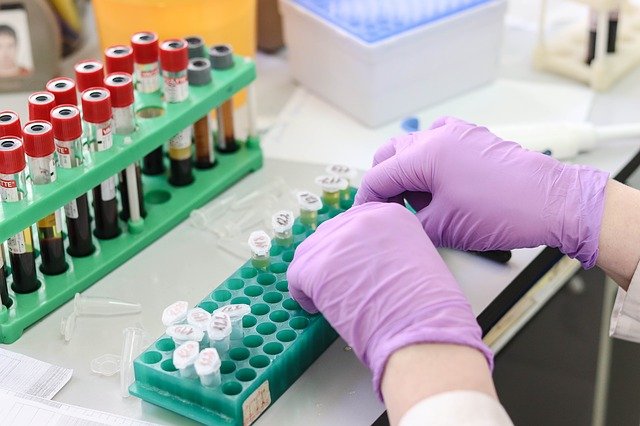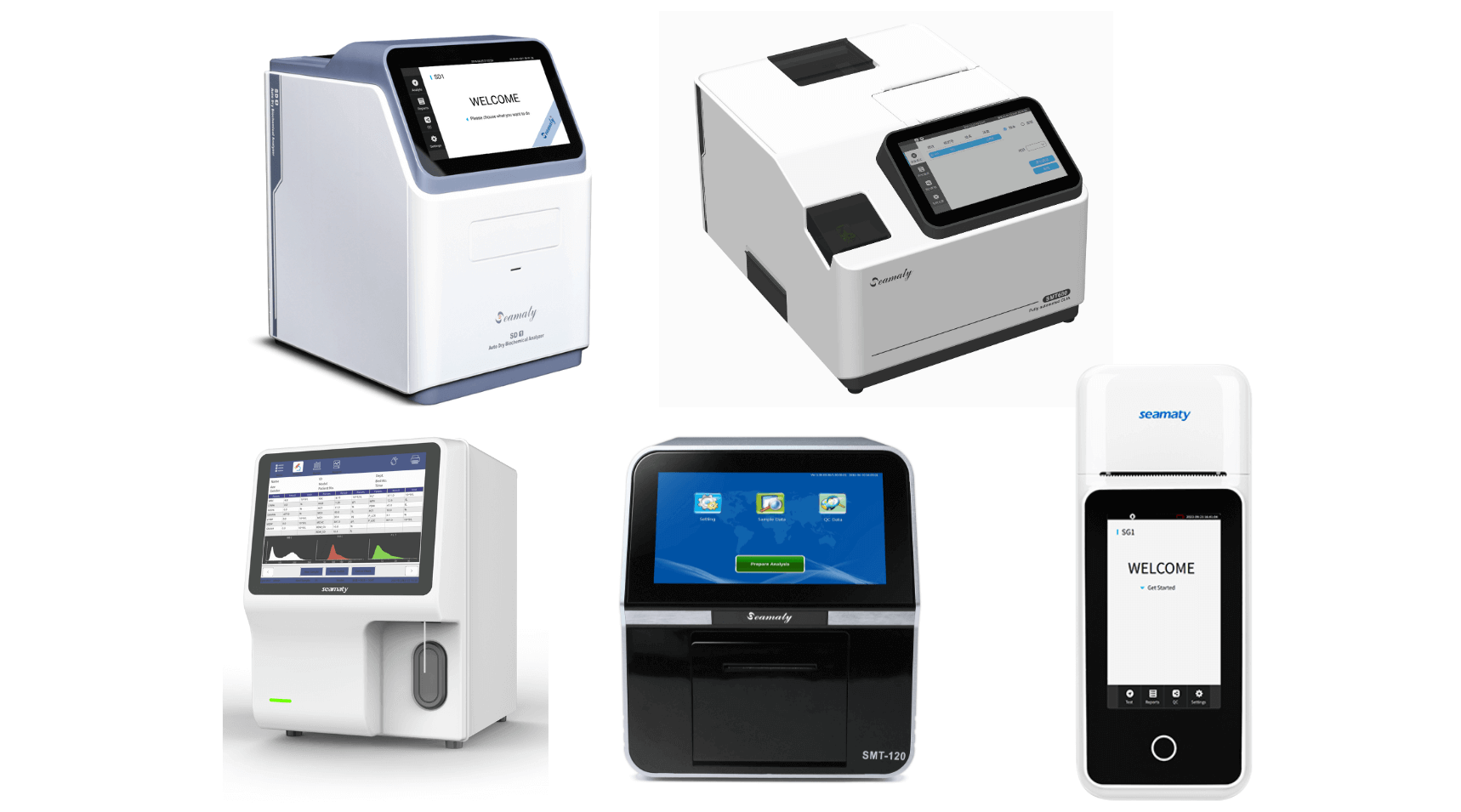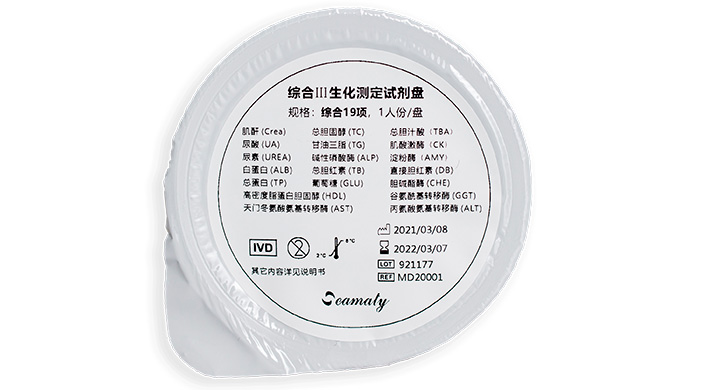The cbc test machine plays an important role in clinical medical diagnosis. Inaccurate blood test results may mislead doctors to make wrong judgments and cause adverse consequences. The following are 7 ways in which the handling of blood samples may affect the accuracy of the cbc test machine.

1. Blood collection
Blood analysis generally requires the use of anticoagulated venous blood, as far as possible without terminal skin puncture blood collection. Because different parts of the skin puncture blood cell composition and the ratio of cells to plasma is often inconsistent, and the difference with venous blood is greater .
From a technical point of view, capillary blood collection is less. The fully automatic cbc test machine requires a larger amount of blood, and it is not easy to collect enough, much less to repeat the test when needed. Therefore, in addition to a few not easy to take venous blood, such as infants, patients with large burns and certain cases that require frequent blood collection and examination, such as leukemia, tumor radiation therapy or chemotherapy patients, should be used for venous blood testing.
2. Choice of container
The container for storing anticoagulated blood should be airtight as much as possible to prevent the effects of water evaporation or environmental pollution. To reduce the impact on platelet analysis, plastic tubes should be used, and blood should be mixed immediately after collection. If glass products are used the containers should first be silicified to prevent platelet adhesion, which can cause a reduction in platelet counts. Currently in developed countries commonly use vacuum blood collection system, this system makes the specimen in the blood collection and testing period completely isolated from the outside world, to avoid air or foreign body contamination of blood, but also to prevent the occurrence of hemolysis, improve the accuracy of detection, but also to prevent blood collection and testing personnel due to direct contact with blood and the risk of infection.
3. Anticoagulant
The International Committee for Standardization of Blood (ISCH) recommended anticoagulant is EDTA dipotassium. The content is specified as 1.5-2.2 mg/ml blood. This anticoagulant does not affect white blood cell count and size, has minimal effect on red blood cell morphology, and can inhibit platelet aggregation. disodium EDTA is used for routine blood tests with no significant change in results compared to EDTA dipotassium anticoagulation. However, its low solubility and slow anticoagulation speed make it unsuitable for anticoagulation of terminal blood.
It is important to note that EDTA dipotassium can cause mild expansion of red blood cell volume. MPV is very unstable for a short time after blood collection and plateaus only after half an hour. Citrate anticoagulants have minimal effect on MPV and other coagulation factors, and can be used for platelet analysis.
4. Dilution of blood specimens
In the use of semi-automatic hematology analyzer, blood needs to be pre-diluted before testing, special attention should be paid to the phenomenon of dilution hemolysis. Dilution hemolysis refers to the phenomenon that blood is diluted by high times, with the prolongation of the placement time blood cells dissolve by themselves. Therefore, blood dilution should be measured as soon as possible to avoid the reduction of the number of less.
5. The effect of hemolyzed specimens on the analysis results
Due to improper handling of specimens, such as unsuccessful blood collection, violent shock, etc., can cause hemolysis in the specimen test tube. Specimens with severe hemolysis can result in decreased erythrocyte and hematocrit pressure volume and a relative increase in hemoglobin. This can lead to an increase in MCH and MCHC. In contrast, the mean red blood cell volume is normal. This result can cause clinicians to make incorrect judgments with adverse consequences. Therefore, for hemolyzed specimens, the specimens should be re-collected and then measured.
7. Storage time of blood samples
When anticoagulated whole blood is instrumented at room temperature, the indicators of red blood cells, white blood cells and platelets can be stable for 24 hours. The leukocyte classification can be stable for 6-8 hours. Hemoglobin can be stable for several days.
However, if leukocyte sorting is performed under the microscope, there is a change in granulocyte morphology after two hours. Therefore, if microscopic morphology is required, blood films should be pushed early. Although 4 degree Celsius conditions can prolong the storage period of blood, platelets should not be stored at low temperatures, which can affect the count and volume. Therefore if blood cannot be tested in a timely manner it should be stored at room temperature.
Many literature reported that EDTA salt anticoagulated venous blood, within one hour after blood collection to detect MPV instability, platelet volume gradually increased, can be increased by about 20%, after one hour tends to smooth, in 1-6 hours change is less than 3%. This is due to the increase in platelet shape from concave to spherical shape and volume after blood is mixed with EDTA salt anticoagulant. Therefore, for the accuracy of the results, the measurement should be performed after one hour.
We found that the end blood anticoagulated with EDTA should also be measured at least 15 minutes later. This is because during this time some specimens have a temporary aggregation of platelets, causing a false decrease in platelet count. This not only affects the accuracy of other platelet indicators, but also causes an increase in the white blood cell count. Testing immediately after blood collection. The histogram of platelet and white blood cell volume distribution of the specimen is also abnormal. The histogram of normal distribution can be obtained after a period of time.
8. Hemolytic agent dosage and hemolysis time
Automatic hematology analyzer can control the amount of hemolysate added and the time of hemolysate action. However, when using the cbc test machine for blood cell counting, the hemolytic agent should be added manually after the blood is pre-diluted. After hemolysis, blood cell counting and classification will be performed.
The correct amount of hemolysis agent and the time of hemolysis are very important. If the amount added is insufficient or the time left after addition is too short, incomplete hemolysis can result. This can cause undissolved red blood cells to be counted in the white blood cells, resulting in a false increase in white blood cells.
Incomplete hemolysis can also affect the accuracy of hemoglobin. If too much hemolysis is added to the dose or left for too long white blood cells are significantly distorted. This can cause abnormal leukocyte histograms, inaccurate leukocyte sorting results, or even inability to perform sorting counts.
These are the 7 specimen handling methods that affect the accuracy of the cbc test machine. Test doctors must be blood testing to pay attention to these possible influencing factors.



